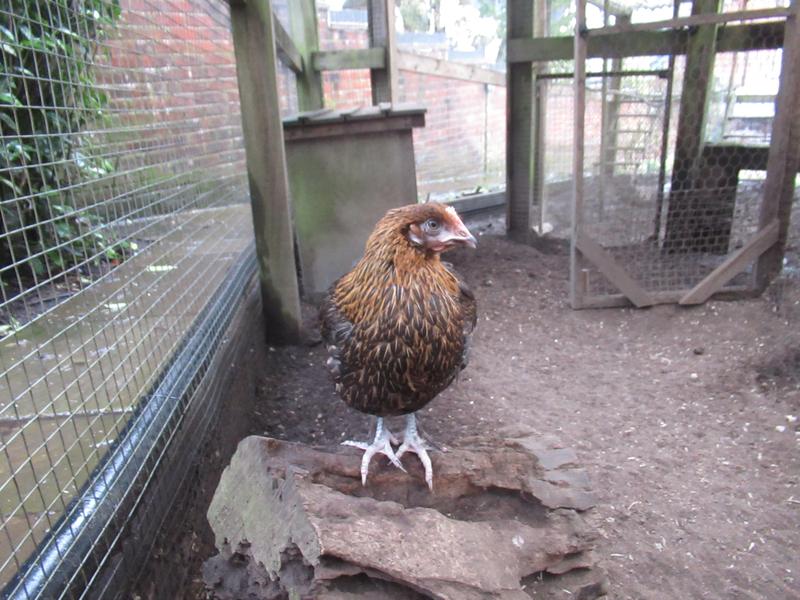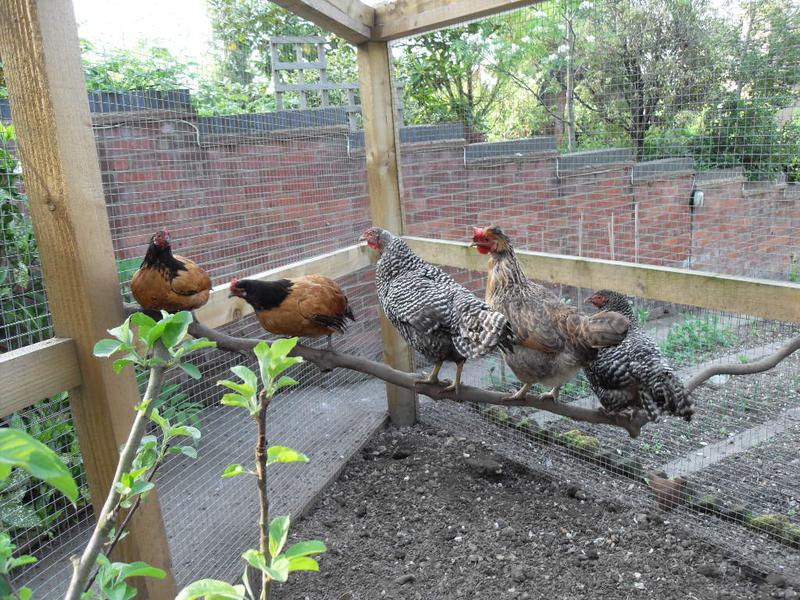On 8/3/23 I added a black star to our bantam flock. We had recently lost two girls and the flock of six felt small. I couldn’t find any bantam breeders near by so decided to have a black star as they are a small breed.
Our biggest girl Daimond, who is a bantam light sussex, weighs about seven pounds so I felt a black star weighing about five pounds when mature would fit in okay. The other breakaway thing is that all my other girls are pure breeds and the black star is a hybrid.
I found a breeder half an hour’s drive away and rang him. He had just one black star left so I asked if we could collect her straight away. She was four and a half months old.
I had been successful adding single girls into the flock so was happy to add just one girl and as before it worked well and she settled in really easily with the rest of the flock taking very little notice of her.
I have always chosen descriptive names but had run out of black/gold names so I decided to call her Star. I add my descriptions of each of my new breeds to my bantam information page and as Star isn’t a bantam I decided to start this new page for her breed information.
The breeder also breeds white star, amber star, gold star, light sussex star and speckled star and I have discovered there is also a blue star. I think each of these is bred from different parents but I am just going to talk about black stars here.
From my research I have found that black stars are usually bred from a barred plymouth rock hen and a rhode island red cockerel but it says a new hampshire cockerel can also be used and one site said a dominique hen and rhode island red cockerel can be used. I would imagine these pairings would give slight variations to the look of the black star.
Black stars are sex linked chickens meaning that the female chicks are all black and the male chicks are black with a white spot on their head.
Black stars were created for good laying in the 1950’s shortly after the second world war. They are dual purpose birds but mostly used for egg laying. They can lay 270 eggs in their first year. They lay a good sized egg ranging in colour from dark brown to light brown.
They have a single comb which is red as are their wattles and earlobes. Hens are black with a gold necklace and gold flecking on their breast. They have clean yellow legs and an upright carriage.
They are docile and hardy and can tolerate hot and cold temperatures. They are non broody. They are quiet apart from the egg song.

Star has grey feathers on the side of her legs stopping at her feet so I wonder if she has something else in her mix. She is also dark brown rather than black but I think their colours can vary quite a bit. She has very long toes. I will add another photo of her when she is fully mature. I am very happy to have Star as part of our flock.
Sadly we lost Star after only two months with us. She had torn a ligament in her ankle which was diagnosed after a vet visit. She had slipped on the steps down from the chickens’ patio and was limping. She spent a lot of time sitting down which we thought was because of her ankle injury.
Then on 4/5/23 we found her dead in the chicken shed that morning. She had seemed good the day before and looked fine at bedtime. She was only six and a half months old and would have been about to start laying soon. This made me wonder if she had a heart defect. That could have caused her to slip in the first place and also explain her sitting down a lot as well as going so suddenly. This was such a shock.

 Click here to see the history of my flock.
Click here to see the history of my flock.